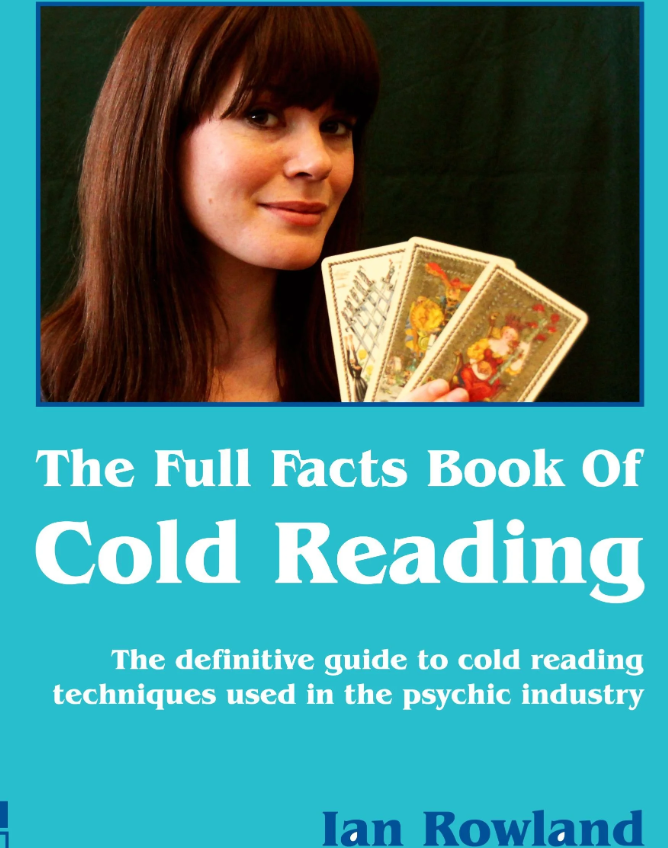Where to Start Cold Reading: A Beginner’s Guide
Where to Start Cold Reading: A Beginner’s Guide
If you’ve ever watched a psychic, fortune teller, or mentalist in action and wondered how they seem to know so much about strangers, you’ve already brushed against the art of cold reading. The first step is understanding where to start cold reading, because while the techniques look mysterious, they can be learned, practised, and refined like any other skill.
Why Learn Cold Reading?
Before we dive into where to start cold reading, let’s consider why people want to learn it in the first place. Cold reading is not only a tool for performers and magicians; it’s also valuable for communication, rapport-building, and understanding human psychology. It helps you connect with people quickly, gain insights through observation, and create powerful conversations.
Knowing where to start cold reading means opening the door to better persuasion, storytelling, and social awareness.
Understanding the Basics
The first step in learning where to start cold reading is recognising that it’s not about supernatural powers. It’s about patterns of language, human behaviour, and probability. When you know how people think and what they want to hear, you can make statements that feel highly personal but are, in fact, broadly true.
At its core, cold reading relies on:
General statements that most people find relatable.
Observation of body language and verbal cues.
Feedback loops where you adjust based on the sitter’s reaction.
When exploring where to start cold reading, these are the pillars you need to understand first.
Classic Techniques to Begin With
If you’re serious about learning where to start cold reading, begin by mastering the classic techniques used by professionals.
The Barnum Statement – A vague but flattering observation, like “You have a strong need for others to respect you, but you don’t always show it.”
The Rainbow Ruse – Assigning opposite qualities at once, e.g., “You’re usually outgoing, though sometimes you prefer solitude.”
The Jacques Statement – Suggesting someone feels underappreciated, which nearly everyone identifies with.
Shotgunning – Offering multiple possibilities until one resonates.
Fishing – Asking open-ended questions to gather information indirectly.
These are the foundations of where to start cold reading, because they’re easy to learn, easy to practise, and surprisingly effective.
Practising the Skill
Knowing where to start cold reading is one thing; practising is another. Cold reading isn’t about memorising lines, it’s about developing fluency. Start by:
Practising on friends in a light-hearted way.
Observing people carefully in everyday situations.
Experimenting with phrasing to see what resonates.
Noting feedback—both verbal and nonverbal.
The best way to learn where to start cold reading is to treat it like a language. The more you practise, the more natural it becomes.
Ethical Considerations
When asking where to start cold reading, it’s vital to think about ethics. Some use cold reading purely for entertainment, such as magicians and mentalists. Others use it to connect with people in coaching or counselling. But there are those who misuse it, pretending to have supernatural powers.
Learning where to start cold reading should always come with responsibility. Use it to build rapport, spark curiosity, or entertain—not to deceive or exploit.
Resources to Help You Learn
If you’re still asking where to start cold reading, here are some useful resources:
Books – Many guides explain the principles in detail, including step-by-step practice routines.
Videos – Watching performances helps you see the flow and timing.
Workshops – Training courses allow hands-on practice with feedback.
Observation exercises – Spend time people-watching to sharpen your skills.
Investing in good resources ensures that your journey into cold reading is both structured and effective.
Common Mistakes Beginners Make
When deciding where to start cold reading, avoid these pitfalls:
Sounding too specific too soon – Start broad, then refine.
Talking too much – Good cold readers listen more than they speak.
Ignoring feedback – If a statement doesn’t land, adjust smoothly.
Forgetting rapport – The goal is to make people feel understood, not exposed.
Avoiding these mistakes will make your exploration of where to start cold reading far more rewarding.
If you’ve been curious about where to start cold reading, the answer is simple: begin with the basics, practise often, and stay mindful of the ethics. Cold reading is less about tricks and more about understanding people. By learning classic techniques, observing carefully, and applying them responsibly, you can build skills that enhance communication, boost confidence, and even entertain others.
Knowing where to start cold reading is the beginning of a fascinating journey into human psychology and connection. Once you take the first step, you’ll discover that the real magic isn’t in the words—it’s in the rapport you create.





